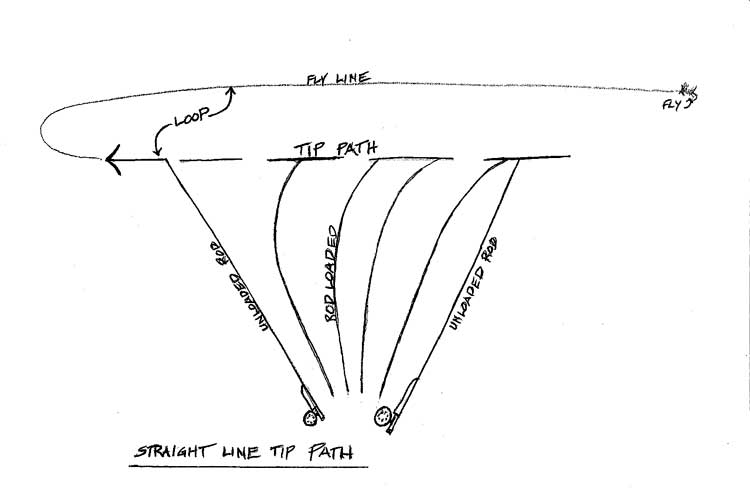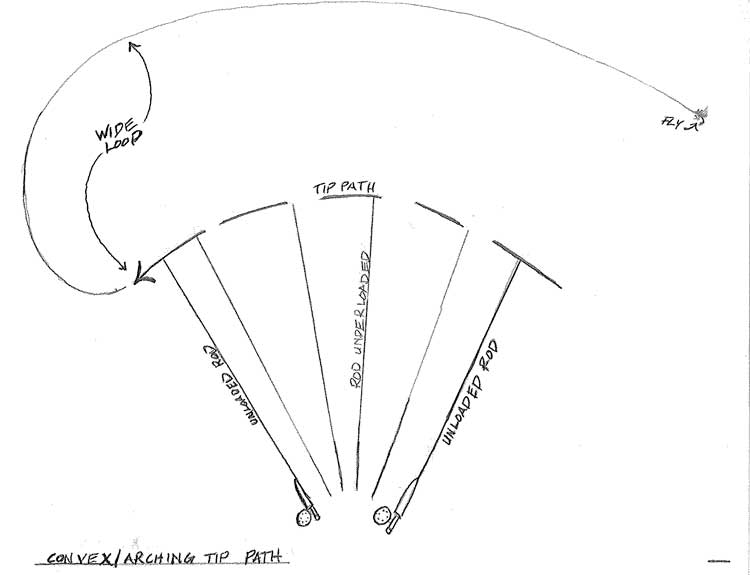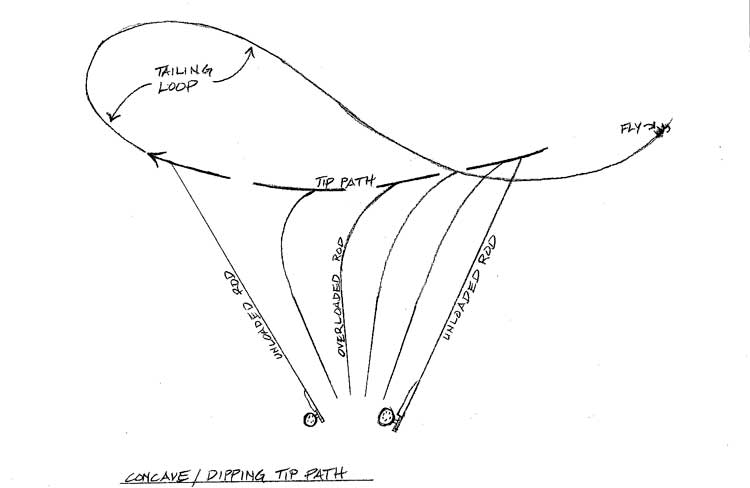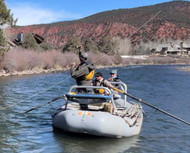What Is A Fast Action Fly Rod?
As a Fly Fishers International Casting Instructor and a fly rod builder, there are many questions I get from fly fishers looking to purchase their first “serious” rod.
The “serious” rod is usually the second rod.
This is when they start to know enough about fly fishing to start asking questions about what they are casting.
One of the most common questions I get is – “what is a fast action fly rod?”
Maybe they’ve seen the latest rod advertisement boasting fast action and wonder if this is what they are missing in their life.
The answer to this question can be deeper than most people realize.
So, in this post, I’ll try to address this by simply answering the question for those needing brevity, and then go into answering the questions you should be asking… “How does the action of my fly rod affect me?”
What Is A Fast Action Fly Rod?
A fast action fly rod has a high speed of return when going from a bent (loaded) position to a straight (unloaded) position, when handling a matching weight fly line.
Typically, this is demonstrated by the flex the rod displays while casting. A fast action fly rod will usually bend in the top 30% of the rod while casting a matching AFFTA (American Fly-Fishing Trade Association) rated fly line.
An example of this would be a 5-weight rod casting a 5-weight (or 140 grains in the first 30 feet) fly line.
What Is A Slow Action Fly Rod?
A slow action fly rod has a low speed of return when going from a bent (loaded) position to a straight (unloaded) position when handling a matching weight fly line.
Typically, this is demonstrated by the flex the rod displays while casting.
A slow action fly rod will usually bend in the entire length of the rod (to the grip) while casting a matching AFTM (Association of Fishing Tackle Manufacturers) rated fly line.
An example of this would be a 5-weight rod casting a 5-weight (or 140 grains in the first 30 feet) fly line.
How Does The Action Of My Fly Rod Affect Me?
Now that you understand what a fast action rod is, let’s talk about why and how it affects you.
The truth is the rod action affects you in every way possible.
The point of fly casting is to manipulate your fly line and effectively present a fly to your target.
The movement of your fly line is directly related to the path your rod tip makes through the casting stroke.
There are 3 types of paths that your rod tip can make.
#1: Straight Line Tip Path
The 1st is a straight line. This is ideal for almost all fishing scenarios. This tip path will create a narrow loop (the loop is the shape your fly line makes in the air when you cast) with straight and parallel legs.

#2: Arching Tip Path
The 2nd is a convex or “arching” tip path (think of the motion a windshield wiper makes). This will produce a wide loop that is not very aerodynamic and will be disrupted in windy conditions and prevent longer casts.

#3: Dipping Tip Path
The 3rd is the concave or “dipping” tip path, which will create the dreaded “Tailing Loop.”
In a tailing loop, the top leg of the loop crosses the bottom leg and will make what has been often called a “Wind Knot” … really, it’s a poor casting knot.

So, what does this have to do with the action of my fly rod?
We’re getting there… trust me.
Understanding Loop Shapes And Fly Rod Tip Paths
We must understand loop shapes and tip paths before we can understand how different action fly rods are going to perform with various users.
How a rod loads (or bends) is critical to the type of path the rod tip will make during a cast. Smoothly loading (or bending) your rod during the casting stroke is the only way you can get the rod tip to move in a straight line.
If you don’t apply enough power, the rod won’t load enough to effectively cast your fly line. If you apply too much power the rod tip will dip (or bend too much) during your casting stroke, and you will end up with a tailing loop and probably time on the bank untangling or rigging up again.
Therefore, the casting stroke should start slow and finish fast, in order to smoothly load the tip of your fly rod against the weight of the line.
Now there are several other factors that go into making a straight-line tip path (and consequently a good loop) such as casting arch, stroke length, timing, and crisp stops at the end of your casting stroke, but I want to keep this to the elements that are affected by rod action. So, I will fight the urge for this to become a full-blown casting lesson and move on.
Hopefully, those of you that have stuck around are starting to put this together.
Now let’s go back to the bigger question, how does the action of my fly rod affect me?
The answer to this question depends on how you cast and your power application.
Most anglers I have worked with have a problem using too much power or unevenly distributed power in their casting stroke.
This is where a fast action rod is best suited.
Because the rod is stiffer, it is less likely to dip and make a tailing loop.
Think of it like training wheels for anglers that have a problem over applying power to their cast. A comment I often get from casters when they are testing a fast rod is, “Wow! This thing can cast forever.” The odds are, this is the first time they have cast a rod that stood up to the overpowering of their cast and allowed them to make a nice aerodynamic loop (because the faster rod helped create a straight-line tip path).
Yes, the feeling is incredible and can be addictive. That’s why companies are designing more and more fast action rods.
So, if you are making a longer cast or windy conditions are making you need to cast with more power, a fast action rod might be the best fit for you.
What Kind Of Fly Rod Do I Need? Fast Action vs. Slow Action
Now, this is the time where a fly fisher needs to ask the question, what kind of rod do I need in MY fishing scenarios?
If you are mostly fishing within 30 feet, then you need to take into consideration that a fast action rod doesn’t load as easily and might have trouble accurately delivering your fly to the fish that is 20 feet from you.
Also, you might want to think about how a stiffer tip might not be the best for hook sets if you are using a lighter tippet.
What if you don’t have a problem with too much power in your cast, or what if you don’t have enough power at all? A fast action rod is not going to help in this situation.
It may cause timing issues if the caster is trying to feel the rod load to indicate when to make the next cast. In these two situations a medium or slow action rod might be better for the caster and allow them to feel the cast better.
I always find it interesting when a person buys a fast action rod then fishes with a heavier weight line or one of the line tapers that is a half weight heavier because it “feels better.” I believe some folks call this “lining up” and an example would be using a 6wt line on a 5wt rod.
This basically (whether they realize it or not) slows down the rod action and means instead of buying a fast action rod, maybe they should have gotten a slower action rod to suit their casting.
I’m not saying that better casters don’t use fast action rods, but once you get a better understanding of your casting mechanics, a slower action rod can just be more fun at times.
Bottom Line
The reason that rod manufacturers build different action rods is because we are all different and every day of fishing is not the same.
The most important question that you should ask is, does your fly rod make you happy?
The only correct answer to this question is “YES”.
If the answer is no, then hopefully this entry will give you some ideas of how to select your next fly rod.







